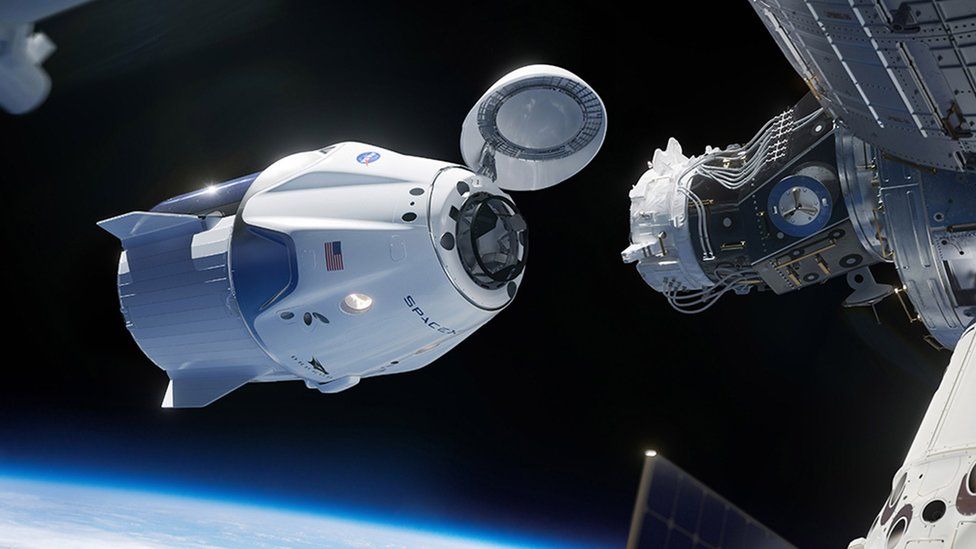SpaceX Crew Dragon vs Boeing Starliner in 2024
The commercial space race is heating up, and SpaceX’s Crew Dragon seems to be leaving Boeing’s Starliner in its cosmic dust. Did you know that as of 2024, SpaceX has flown 10 crewed missions to the International Space Station, while Boeing’s Starliner only made one crewed flight, which also went wrong as NASA astronauts Sunita Williams and Butch Wilmore are stuck. Talk about a giant leap! But what’s behind this astronomical gap? Strap in as we blast off into the thrilling world of commercial spaceflight and uncover why Elon Musk’s brainchild is orbiting circles around its competitor.
A Brief History of Both Capsules
Alright, let’s dive into the space race between SpaceX and Boeing. It’s been quite a ride!
NASA kicked off its Commercial Crew Program back in 2010. The goal? Get American astronauts flying on American rockets from American soil again. No more hitching rides with the Russians.
At first, it looked like a pretty even match. SpaceX had its Dragon capsule, Boeing had its Starliner. Both companies were given billions to get the job done.
But then, things got interesting. SpaceX started hitting milestones left and right. They were like the hare in this space race.
Boeing, on the other hand, hit some bumps. Their first uncrewed test flight in 2019 didn’t go as planned. It was like watching the tortoise stumble.
SpaceX kept pushing ahead. They launched their first crewed mission in 2020. Meanwhile, Boeing was still trying to get its act together.
Fast forward to now, and SpaceX has been regularly ferrying astronauts to the ISS. Boeing? They’re still working on getting that first crewed flight off the ground.
It’s been a tale of two capsules, with one zooming ahead and the other playing catch-up. But hey, in space, it’s not always about who gets there first – it’s about who can do it safely and consistently.
SpaceX’s Stellar Success
Let’s talk about SpaceX’s Crew Dragon – it’s been on quite a roll!
Since its first crewed launch in 2020, Crew Dragon has been racking up wins like a space-age champ. We’re talking multiple successful missions to the International Space Station, ferrying astronauts back and forth like a cosmic taxi service.
The tech on this thing? It’s next level. Touchscreens instead of a gazillion switches, automated docking systems, and sleek spacesuits that look like they’re straight out of a sci-fi movie.
NASA’s been over the moon about Crew Dragon’s performance. They’re getting reliable rides to space without breaking the bank. It’s like finding a luxury car service at economy prices.


And the astronauts? They’re loving it too. They’ve praised everything from the smooth ride to the comfy seats. It’s like going from economy to first class in space travel.
Of course, it hasn’t all been smooth sailing. There have been a few hiccups along the way, like any new tech. But overall, SpaceX has been hitting it out of the park.
Crew Dragon isn’t just a spacecraft – it’s a game-changer. It’s opened up a new era of commercial space travel, and it’s got everyone from NASA to space enthusiasts excited about what’s next.
Boeing’s Starliner Struggles
Boeing’s Starliner journey has been more turbulent than a flight through an asteroid field. Let’s break it down.
Back in 2019, Starliner’s first orbital flight test was a bit of a flop. The capsule didn’t reach the right orbit and never made it to the International Space Station. It was like showing up to the wrong party.
The culprit? Software issues. Turns out, rocket science is hard, even for a company that’s been building planes for a century. These glitches set Boeing back big time.
Since then, it’s been delay after delay. Each setback has been like watching a space-themed version of “Groundhog Day”.


All these hiccups have put a strain on Boeing’s NASA contract. While SpaceX is zipping astronauts to and from the ISS, Boeing’s still trying to get off the launch pad.
It’s not game over for Starliner, though. Boeing’s still in the race, just… a few laps behind. They’re working hard to iron out the kinks and get that capsule space-ready.
The space industry is watching closely. Can Boeing bounce back? Or will Starliner remain grounded while others reach for the stars? Stay tuned – this space drama is far from over!
NASA’s Balancing Act: Managing Two Commercial Partners
NASA’s playing a delicate game of space diplomacy here. They’re committed to keeping both SpaceX and Boeing in the game, even if one’s clearly in the lead.
Why? Competition breeds innovation, and NASA knows it. They’ve been adjusting contracts to keep Boeing motivated while rewarding SpaceX’s success.
Recently, NASA’s been shuffling astronaut assignments between the two companies. It’s like a cosmic dance, making sure everyone gets a turn.
Looking ahead, NASA wants both capsules flying regularly. They’re dreaming of a future where choosing between Dragon and Starliner is like picking between Uber and Lyft for a ride to space.
It’s a tricky balance, but NASA’s determined to keep both players in orbit. After all, in space, having a backup plan isn’t just nice – it’s essential.
SpaceX’s Technological Edge
When it comes to space tech, SpaceX is playing chess while others are still figuring out checkers.
Take reusability. SpaceX’s Falcon 9 rockets are landing themselves like it’s no big deal. Starliner? It’s still working on just getting to space reliably.
SpaceX’s Raptor engines are pushing the boundaries of propulsion. They’re not just building rockets; they’re redefining what rockets can do.
And let’s talk about that vertical integration. While others are juggling suppliers, SpaceX is building everything in-house. It’s like they’ve got a space factory in their backyard.
This DIY approach lets SpaceX innovate at warp speed. They can dream up an idea and have a prototype built faster than most companies can schedule a meeting.
Is SpaceX perfect? Nah. But they’re setting a pace that’s leaving others in the space dust. It’s not just about getting to space anymore – it’s about how efficiently and innovatively you can do it.
Conclusion
As we touch back down on Earth, it’s clear that the space race of the 21st century is as thrilling as ever. SpaceX’s Crew Dragon has undoubtedly taken the lead, leaving Boeing’s Starliner playing catch-up in this cosmic competition. But in the vast expanse of space, there’s room for more than one player. As we look to the stars, one thing’s for certain: the future of space travel is being written right before our eyes. Whether you’re a space enthusiast or just a casual observer, these developments promise to shape the final frontier in ways we’ve only dreamed of. So, keep your eyes on the skies – the next chapter in human spaceflight is just beginning to unfold!


